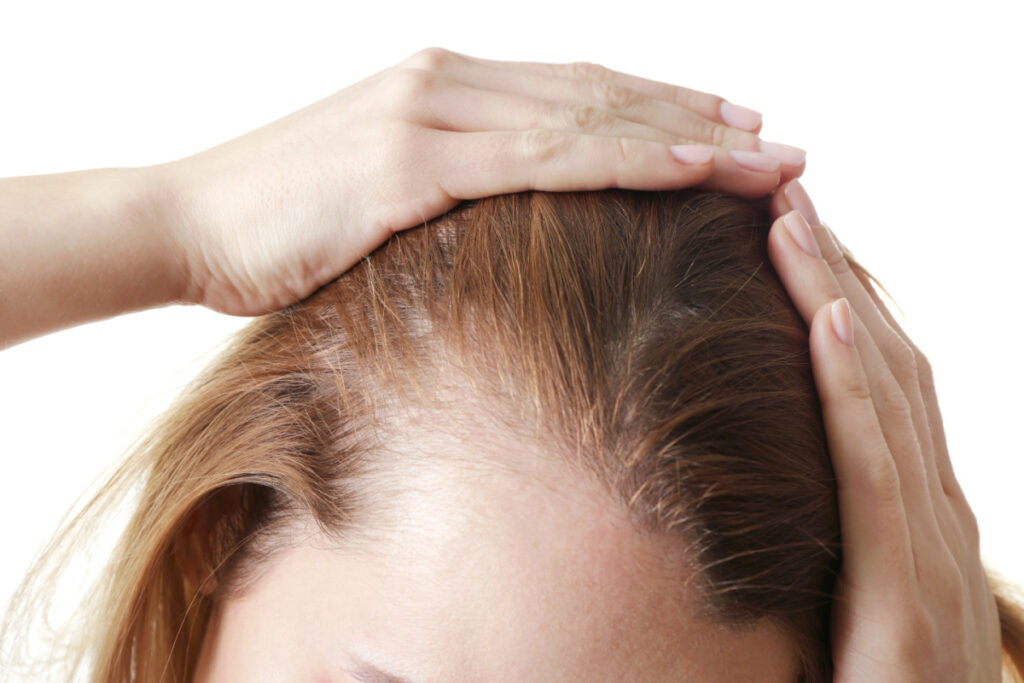Female Hair Loss Pattern

Female Pattern Hair Loss: Recognizing the Signs and Exploring Treatment Options
Hair loss is a significant concern affecting individuals of all genders, races, and ages. While commonly associated with men, hair loss in women is a prevalent issue that often remains unaddressed. Female Pattern Hair Loss (FPHL), known as androgenetic alopecia, explicitly affects women. This blog post explores the causes, signs, and available treatment options for FPHL and strategies for coping with this challenging change.
Understanding Female Pattern Hair Loss
FPHL is a gradual and progressive condition characterized by hair thinning in women. Unlike male pattern baldness, which typically follows predictable patterns with receding hairlines and bald spots, FPHL presents differently in women. It usually begins with a widening part line or thinning hair around the crown. As time passes, the hair becomes thinner, which may lead to significant hair loss without intervention.
Causes and Risk Factors
While the precise cause of FPHL remains uncertain, it is believed to result from a combination of genetic, hormonal, and environmental factors. The primary hormone associated with FPHL is dihydrotestosterone (DHT), a derivative of testosterone that influences the hair follicles’ growth cycle. Women with a genetic predisposition to FPHL are more susceptible to the effects of DHT, which can cause the miniaturization of hair follicles, resulting in weaker and thinner hair strands.
Moreover, hormonal fluctuations throughout a woman’s life can trigger FPHL. These changes include pregnancy, menopause, and polycystic ovary syndrome (PCOS). Certain medications, high-stress levels, and poor nutrition can also contribute to FPHL or worsen its symptoms.
Signs of Female Pattern Hair Loss
The following signs characterize FPHL:
- Thinning hair: Hair gradually becomes thinner, particularly at the top of the scalp.
- Widening part line: Hair loss and thinning around the crown can cause the part line to appear wider.
- Receding hairline: Although less common in women, some may experience a slightly receding hairline.
Coping with Female Pattern Hair Loss
Discovering hair loss can be emotionally challenging, especially when societal standards emphasize the significance of hair in beauty and femininity. However, there are ways to manage the emotional impact:
Seek support: Reach out to friends, family, or a mental health professional to discuss your feelings. Connecting with others who have gone through similar experiences can also provide valuable support.
Educate yourself: FPHL is a medical condition, not a reflection of your worth or beauty. Learn about available treatment options and strategies to manage the situation effectively.
Hairstyling: Consult with a hairstylist who can recommend flattering hairstyles to conceal or minimize the appearance of thinning hair.
Scalp care: Maintain a healthy scalp by using gentle hair care products, avoiding harsh chemicals, and keeping your scalp clean.
Treatment Options
While there is currently no cure for FPHL, several treatment options can help slow down hair loss and promote hair regrowth:
Minoxidil: This topical over-the-counter medication stimulates hair growth and slows down hair loss. Different strengths are available for women.
Finasteride: Primarily used to treat male pattern baldness, finasteride can also be prescribed off-label for women in some instances. It works by blocking DHT production.
Low-Level Laser Therapy (LLLT): A non-invasive treatment that utilizes laser devices or combs to stimulate hair follicles and encourage growth.
Hair Transplant: In severe cases, hair transplant procedures may be considered to transplant healthy hair follicles to thinning areas.
Embracing Change with Confidence and Grace
Female Pattern Hair Loss affects numerous women worldwide, and early recognition of the signs is crucial. Seeking professional advice and exploring available treatment options can make a significant difference. Remember, FPHL does not define your beauty or self-worth. With the proper support and treatment, women can navigate this challenging change confidently and gracefully.
We hope this blog post provides valuable information and encourages you to take appropriate steps to manage Female Pattern Hair Loss effectively.…